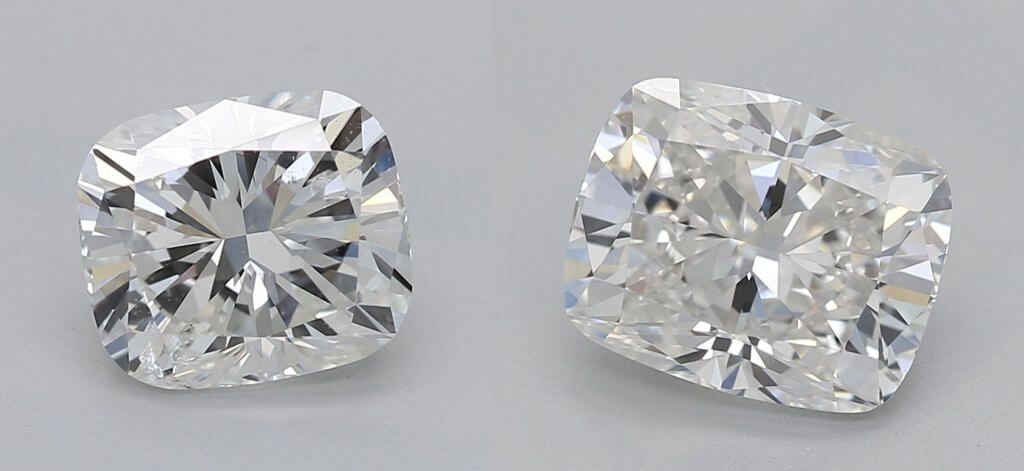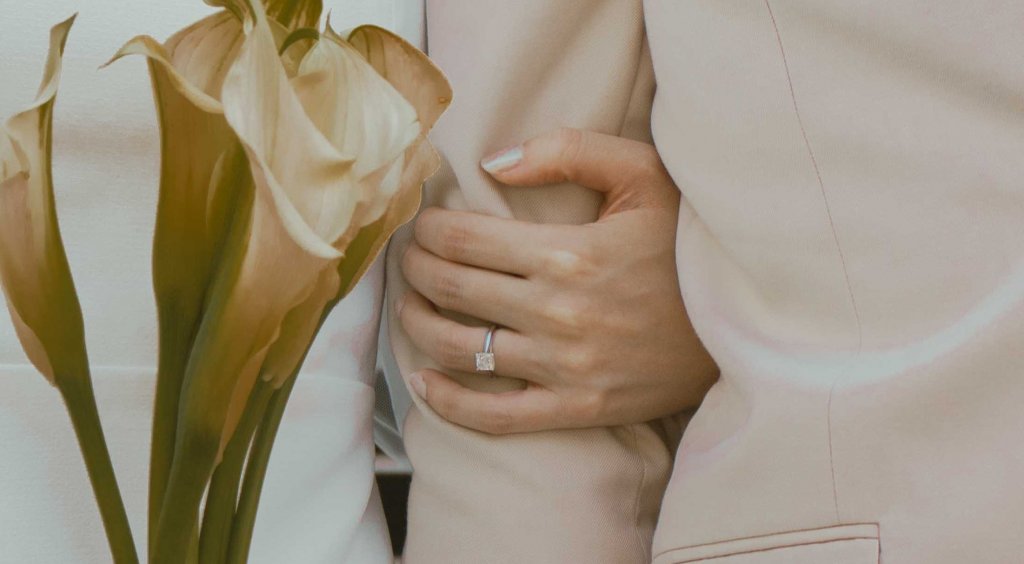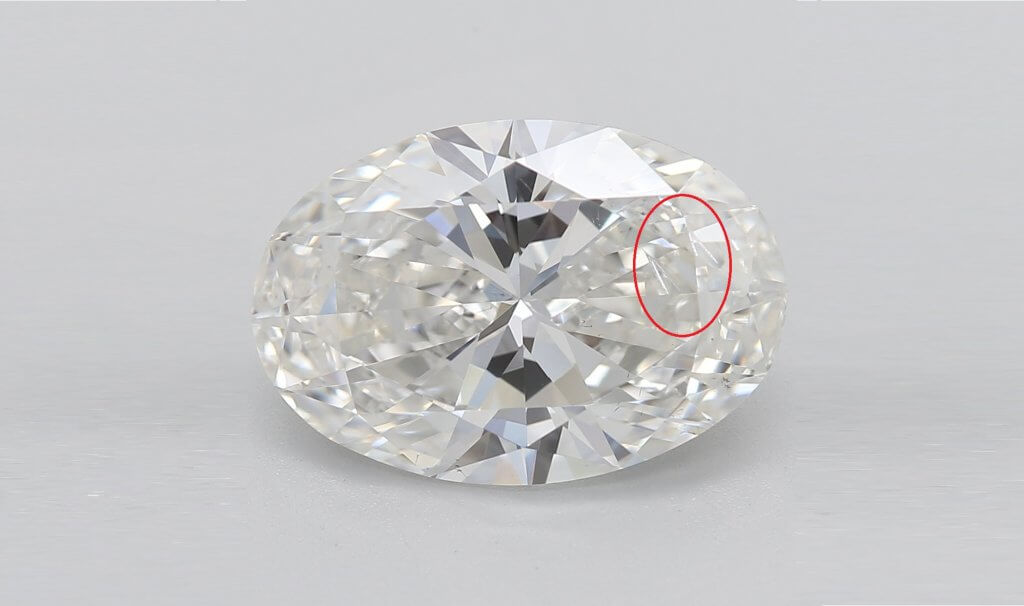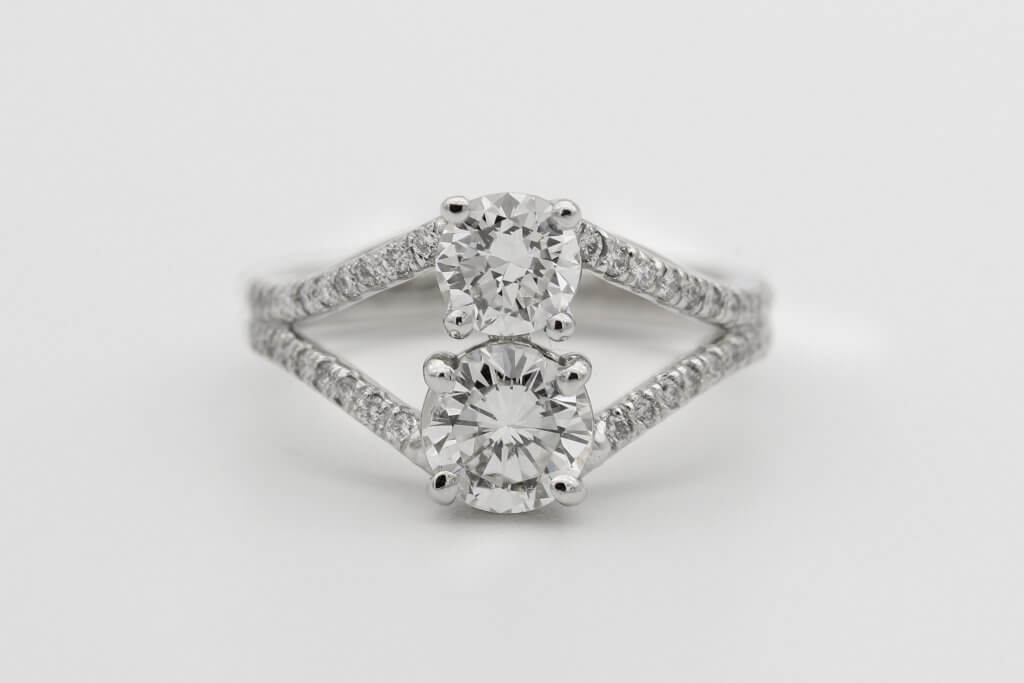SI1 Vs SI2 Clarity – Who Wins?
The GIA’s clarity scale comprises many incremental changes in quality, which means that the differences between one grade and the next are very subtle – and, as we mentioned before, barely noticeable to anyone who is not very well educated in the world of diamonds and gemology.

By now, you’ve probably wrapped your head around the idea that, by dipping from VS2 to SI1, you’re unlikely to be able to detect any difference in quality, since SI1 is still a very popular grade for finding eye clean diamonds – but can you go lower?
Absolutely. There are real and tangible differences between diamonds graded at SI1 and SI2 but, as you can see from the clarity scale above, the two grades are categorized under one definition: inclusions that are noticeable at 10x magnification and, sometimes, also without magnification.
Remember that, as with any clarity grade, it’s never an exact science. No two SI2 diamonds are the same, and some will be incredible investments while others won’t be. The SI1 grade sits on the boundary between grades that are abundant in eye clean diamonds, and grades that offer more non-eye clean options than eye clean options. This is, of course, one of the biggest arguments against buying a diamond online. While the SI grades are great for bagging a deal, you can’t be sure you’re getting a good deal unless you appraise it in person, for yourself, first.
What is the difference between SI1 and SI2?
It’s subtle, and open to interpretation, but the key difference between SI1 and SI2 diamonds is the extent and visibility of the inclusions.
There’s no exact mathematic formula or ‘master diamond’ to set the example of how SI1 and SI2 diamonds should be sorted. If each diamond’s inclusions had to follow a very specific pattern in order to fit with a particular grade, then there would have to be as many clarity grades as there are diamonds in the world, since every diamond is totally unique – like a fingerprint.
In SI1 diamonds, inclusions are noticeable under 10x magnification but, in SI2 diamonds, inclusions and more easily noticeable under 10x magnification, without being so severe and so obvious that the stone ought to be considered I1, I2, or I3.
If there was no ‘intermediary’ grade between SI1 and I1, then many diamonds with fairly noticeable inclusions (under magnification) would have to be sold as SI1, which means a higher price for slightly lower quality – or, alternatively, they would have to be marketed as I1 and, as a result, sold at a lower value than they could realistically attain.
Funnily enough, this is the argument some labs – like the EGL – use in favor of the SI3 clarity grade, which has proven pretty controversial since its introduction. SI3, however, is not a grade we consider to be beneficial to shoppers – and, since the GIA does not consider it a true clarity grade, we would advise any of our readers to avoid it.
Is SI2 better than SI1?
Sometimes it’s better, but sometimes it’s not. It totally depends on the visual appearance of the diamond, since some SI2 diamonds will be eye clean and some won’t be.
The biggest benefit to purchasing an SI2 diamond over an SI1 diamond is the fact that you’ll get a more attractive price. An SI2 diamond will generally work out to be between 10% and 30% cheaper than a comparable SI1 diamond, but you won’t want to take advantage of the very top end of those savings, since the cheapest SI2 diamonds are unlikely to be eye clean, or worth the money.
If you find an SI2 diamond that appears eye clean (and checks all the boxes for Cut quality and Color, as well as other aspects like proportion, ratio, and fluorescence) then saving a few hundred dollars on Clarity is an excellent decision.
If, however, you find an SI2 diamond that is not eye clean – or, alternatively, that is eye clean but fails to live up to your standards for Cut, Color, or any other aspect of quality – then it won’t represent a worthwhile investment, and should be left behind in favor of a better diamond at a similar price point.
Ultimately, there is no simple, one-word answer to the SI1 vs SI2 debate, just as there’s no straightforward answer to the question of VS2 vs SI1. As a shopper, you’ll need to be confident about judging diamonds for yourself. While you’re not an expert on the subject, you don’t need to be – you just need to understand what you’re looking for, and what you’re willing to pay for.

Mar 26, 2022 By Willyou.net
Discover The Rarity Of Type IIa Diamonds

Sep 24, 2021 By Willyou.net
The Surprising Facts About Diamond Feathers








